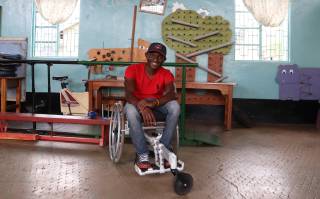The goal of this project is to develop a blueprint for a digital design and manufacturing (DDM) clinical service.
Project: Improving the efficiency of co-designing personalised assistive technology through utilising digital design and manufacturing systems
Start date 1st May 2023
End date 31st October 2023
PI Jonathan Howard (Swansea Bay University Health Board)
Co-Is Dr Sally Cloke (Cardiff Metropolitan University)
Prof Dominic Eggbeer (Cardiff Metropolitan University)
Dr Katie Beverley (Cardiff Metropolitan University)
Dr Lorna Tasker (Swansea Bay University Health Board)
This project applies a user-centred co-design approach to the development and production of personalised, task-oriented Assistive Technology (AT).
The goal of the project is to develop a blueprint for a digital design and manufacturing (DDM) clinical service. DDM will make the co-design process more time, cost and resource-efficient and support the sharing of designs with other clinicians and service users. In developing a DDM-enabled service, we aim to streamline and simplifying the co-design process to overcome associated barriers to AT use. This will increase the uptake of personalised AT production by clinicians, leading to improved AT designs and greater levels of patient empowerment.
The co-design of personalised AT devices by healthcare services results in provision of solutions better suited to the end-user's needs. This can improve the user’s physical and emotional wellbeing, enabling them to regain function and independence. However, the wider implementation of this co-design process remains limited. Resource inefficiencies in developing, designing and re-using devices increases the time and costs associated with co-designing devices. Additionally, it is unclear the knowledge, skills and expertise required by clinicians to successfully co-design with patients outside the initial setting where previous research was undertaken. This has limited the opportunities for end-users to currently benefit from provision of more personalised AT.
To address this challenge, we seek to demonstrate how DDM could be used to scale-up this healthcare intervention, increasing the efficiency, cost-effectiveness and accessibility of this co-design AT process.
 Close
Close


